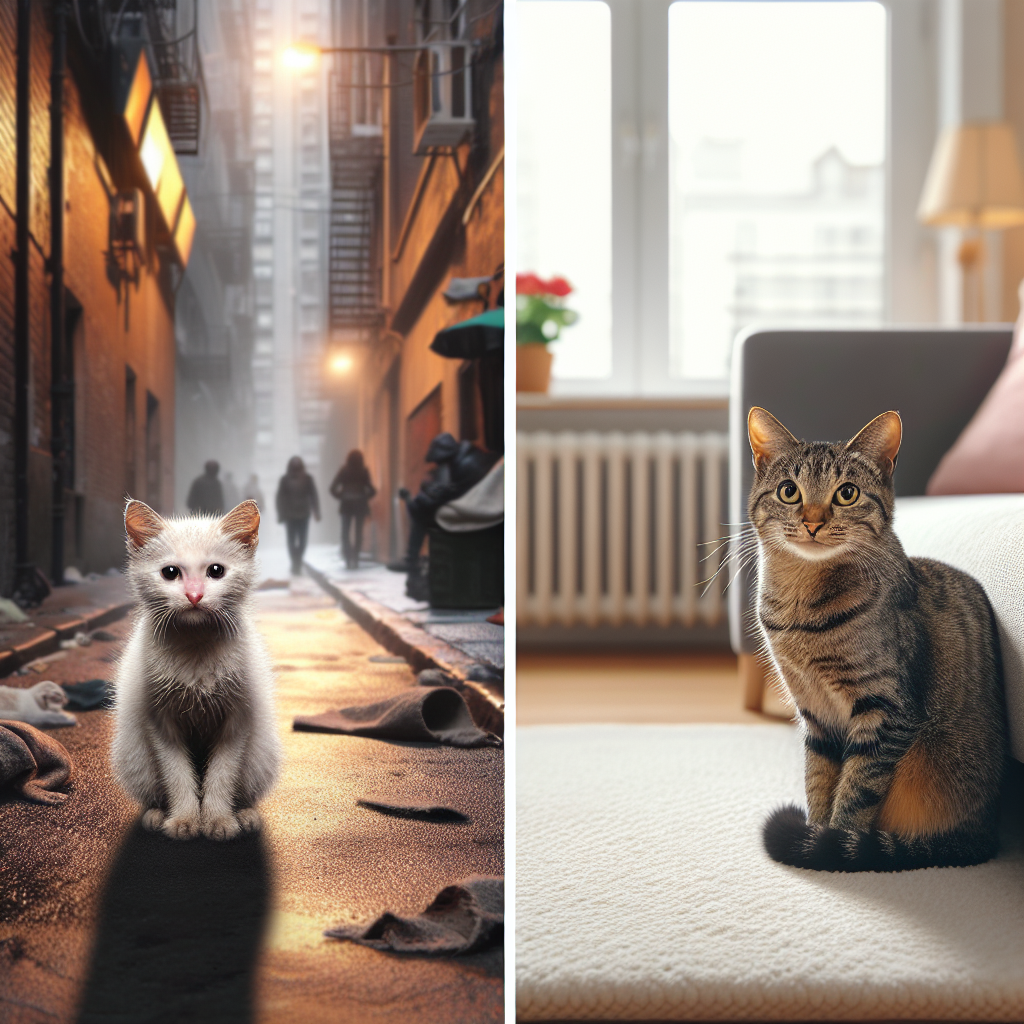
Introduction
Feral cats, often misunderstood and overlooked, are domestic cats that have reverted to a wild state. Unlike stray cats that are lost or abandoned pets, feral cats are typically born in the wild and have had little to no human contact. This lack of socialization makes them challenging to approach or domesticate, presenting unique challenges for those looking to rescue and adopt them. However, with patience, dedication, and the right approach, these resilient creatures can transform into loving companions. This article delves into inspiring adoption success stories that showcase the potential and heartwarming outcomes of giving feral cats a chance at a better life.
Understanding Feral Cats
Feral cats live in colonies and rely on each other for survival, often forming complex social structures. They are adept hunters, surviving on small mammals, birds, and discarded human food. The hesitation to approach humans is a survival mechanism, rooted in their instinctual behavior. Understanding these aspects is crucial for anyone attempting to rescue and adopt these cats.
The Importance of TNR Programs
Trap-Neuter-Return (TNR) programs play a pivotal role in managing feral cat populations. These initiatives involve humanely trapping feral cats, spaying or neutering them, and returning them to their original location. TNR helps stabilize feral cat populations and improves their quality of life by eliminating behaviors associated with mating, such as fighting and yowling.
Adoption Success Stories
Milo: From Feral to Family Member
Milo’s journey from a feral cat to a beloved pet is a testament to the power of patience and love. Rescued from a TNR program, Milo was initially wary of humans. His adopter, Jane, spent weeks slowly gaining his trust by sitting quietly near him and offering treats. Over time, Milo began to approach Jane and even enjoyed being petted. Today, Milo is a cherished member of Jane’s family, enjoying indoor comforts and the companionship of his human and feline siblings.
Whiskers: The Curious Explorer
Whiskers was part of a feral colony living behind a local grocery store. Volunteers noticed his curiosity and willingness to approach humans from a distance. After being trapped and assessed, Whiskers was placed with a foster family familiar with feral cat behavior. With consistent socialization efforts, Whiskers gradually became more comfortable indoors. His playful nature emerged, and he quickly learned to enjoy human interaction. Whiskers was soon adopted by a family who appreciates his adventurous spirit and gentle demeanor.
The Role of Foster Homes in Feral Cat Adoption
Foster homes are critical in the transition of feral cats from the wild to a domestic environment. These temporary homes provide a safe space for feral cats to acclimate to indoor living and human interaction. Fosters play a vital role in socializing these cats, introducing them to the comforts of home life, and preparing them for permanent adoption.
Fostering Success: The Story of Luna
Luna was a young feral cat rescued from an industrial area. Her foster family, experienced in handling feral cats, provided her with a safe environment to decompress. The family used gentle approaches, such as talking softly and providing interactive toys, to engage Luna. Over several months, Luna’s confidence grew, and she began to seek out attention from her foster family. Her transformation was so profound that her foster family could not part with her and decided to make her a permanent member of their household.
Challenges and Triumphs in Feral Cat Adoption
Adopting a feral cat comes with unique challenges, including the need for patience, understanding, and a willingness to accept setbacks. However, the rewards are immeasurable. The transformation of a once-fearful feral cat into a trusting pet is a deeply fulfilling experience that enriches the lives of both the cat and its human family.
A Second Chance for Shadow
Shadow was a feral cat trapped during a TNR initiative in an urban neighborhood. Initially, Shadow was terrified of humans and would hide at any sign of movement. His adopter, Tom, employed a slow introduction strategy, allowing Shadow to explore his new surroundings at his own pace. By respecting Shadow’s boundaries and celebrating small victories, such as Shadow’s first time eating in Tom’s presence, a bond gradually formed. Today, Shadow is a loving companion who enjoys cuddles and playtime, a testament to Tom’s dedication and perseverance.
Community Involvement in Feral Cat Rescue
Community involvement is crucial in the successful rescue and adoption of feral cats. Local shelters, volunteers, and animal welfare organizations work together to implement TNR programs, provide medical care, and find foster and permanent homes for these cats. Educating the public about the benefits of feral cat adoption and the importance of TNR programs helps garner support and resources for these initiatives.
The Ripple Effect: How One Rescue Inspired a Community
In a small town, a feral cat named Ginger became the catalyst for change. Rescued by a dedicated volunteer, Ginger’s story of transformation inspired a community-wide effort to help feral cats. The town organized workshops, fundraisers, and TNR events, resulting in a significant reduction in the local feral cat population. Ginger, once a solitary feral cat, now enjoys life as a cherished pet and a symbol of community unity and compassion.
Conclusion
Transforming feral cats into adoptable pets is a challenging yet immensely rewarding endeavor. Success stories like those of Milo, Whiskers, Luna, Shadow, and Ginger highlight the potential for feral cats to lead fulfilling lives as cherished companions. Through patience, dedication, and community support, we can continue to change the narrative for feral cats, providing them with the love and care they deserve. By raising awareness and promoting the benefits of feral cat adoption, we can inspire others to open their hearts and homes to these incredible animals, ensuring a brighter future for feral cats everywhere.






